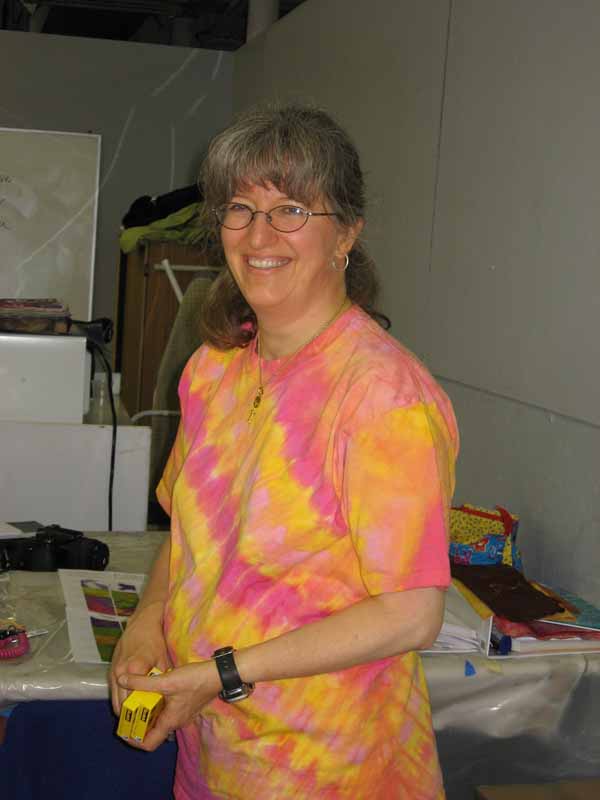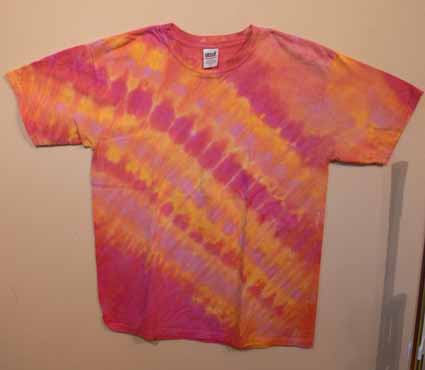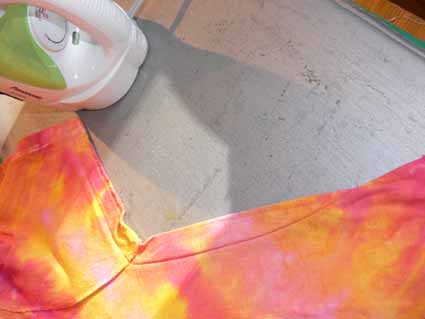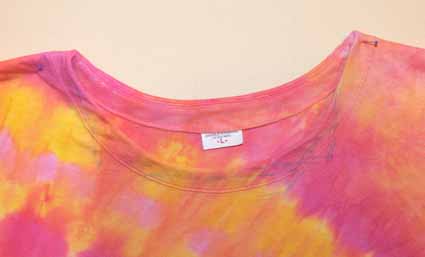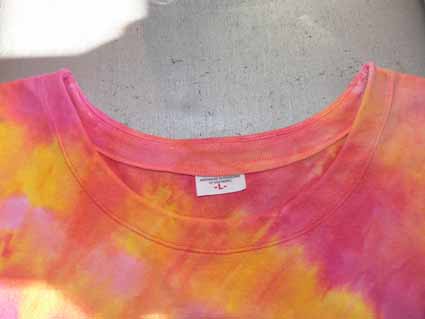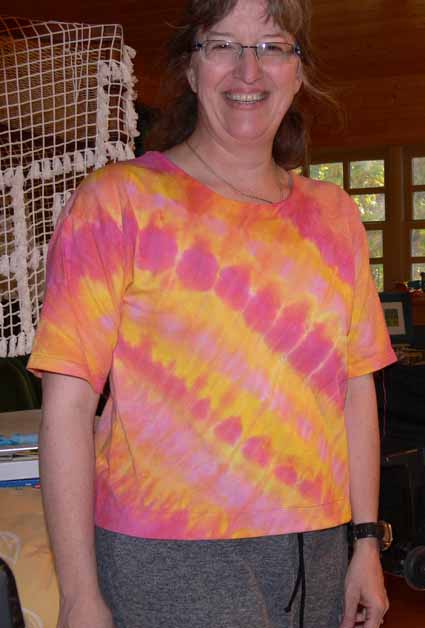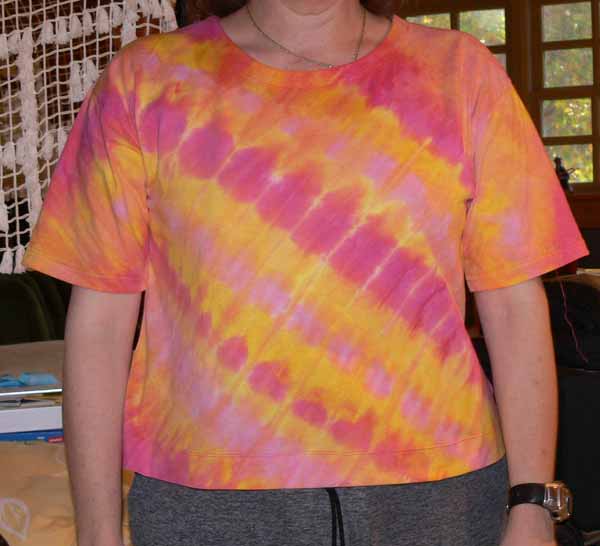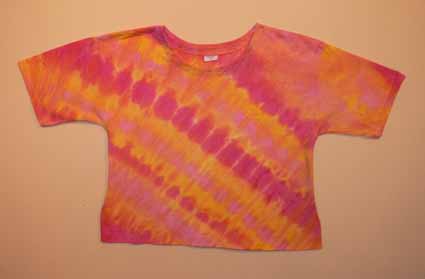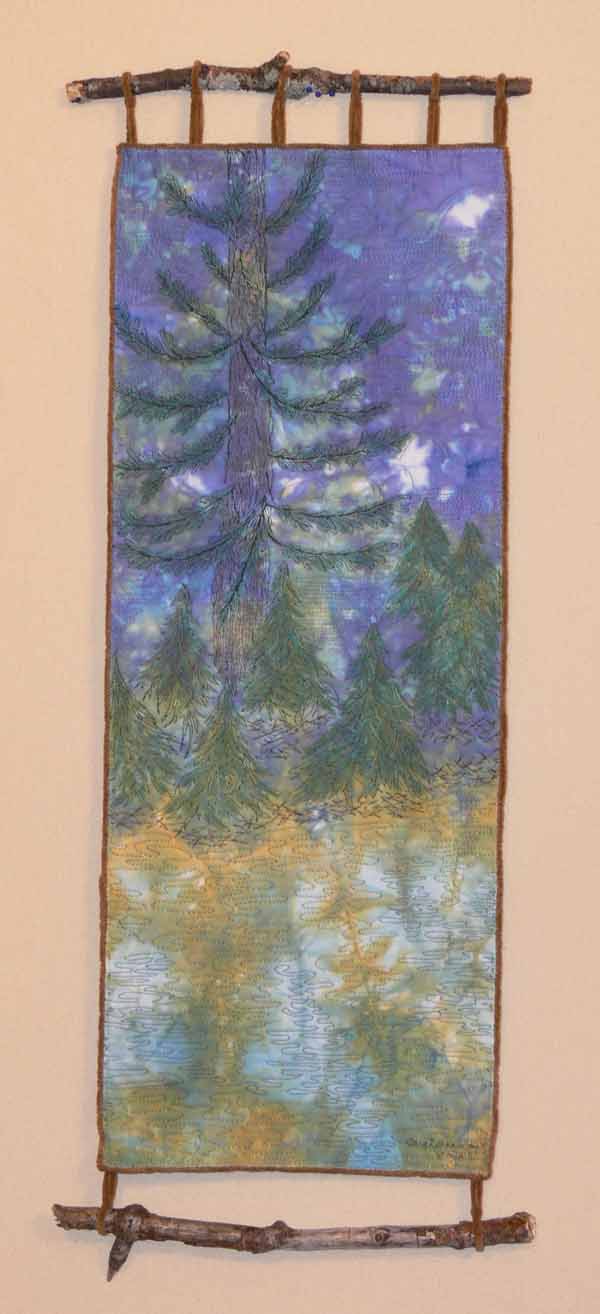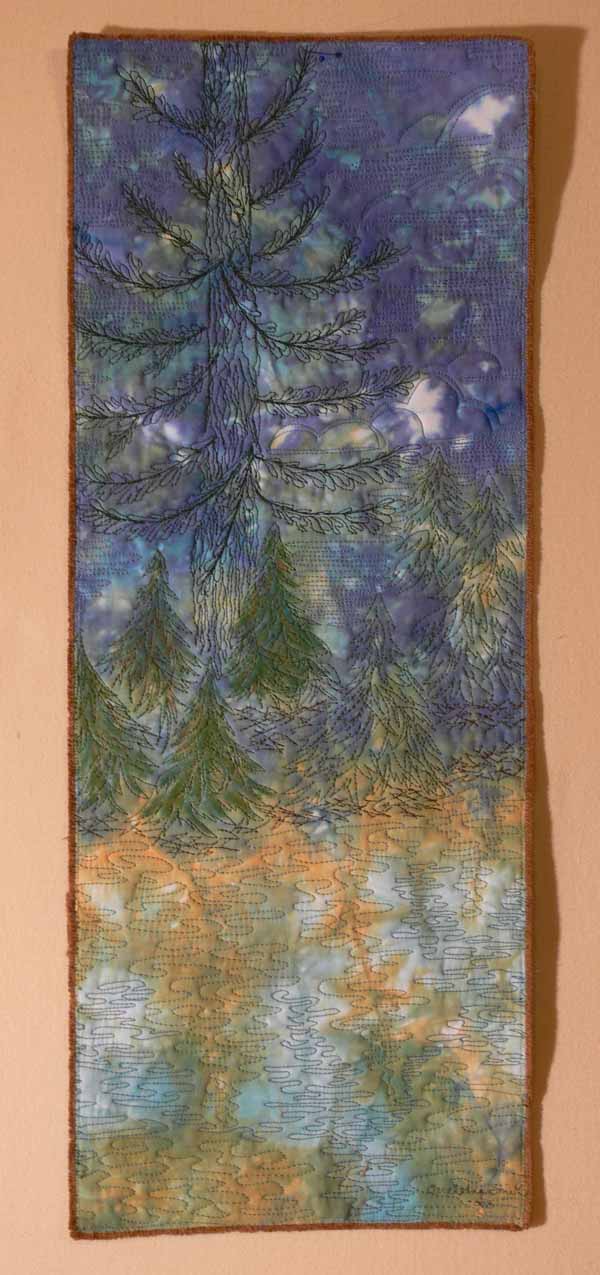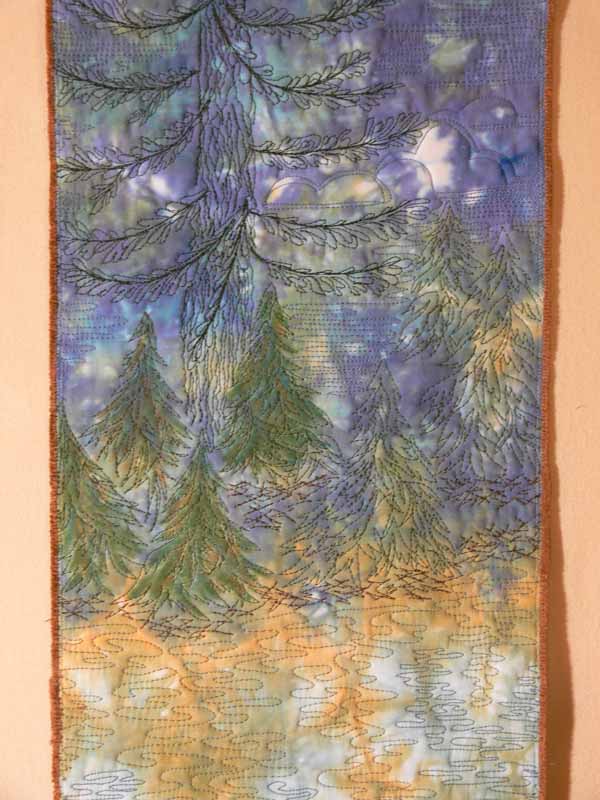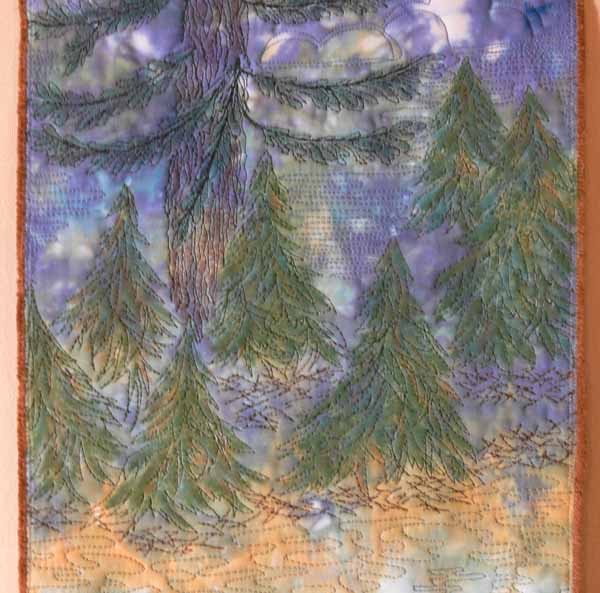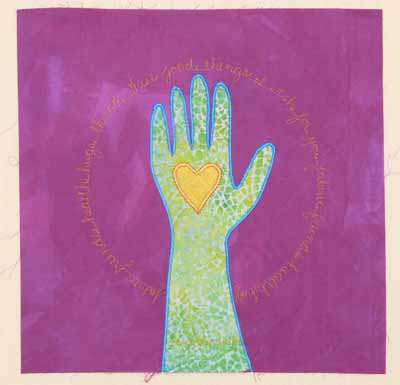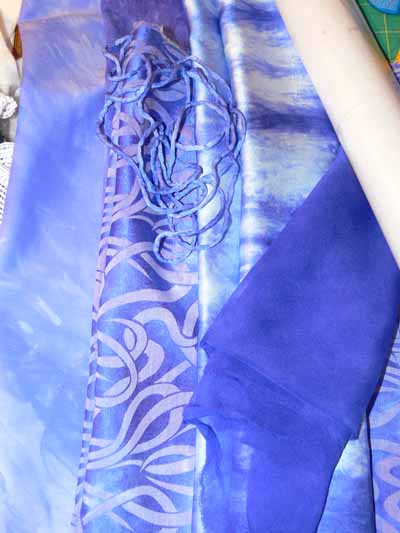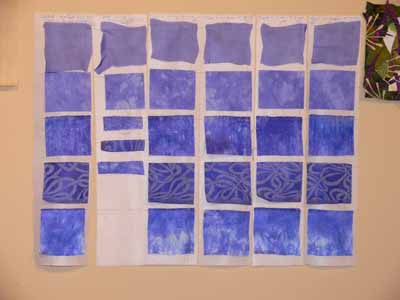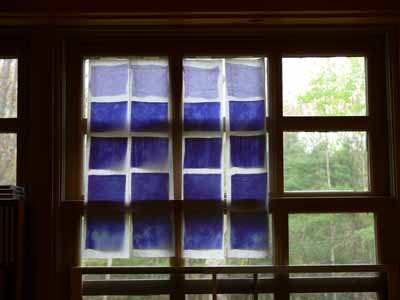Elizabeth Brandkamp posted this list to the DyersList; it was so much fun I asked for and received her OK to share with you…and added a couple of my own signs… If you’d like, visit her blog here.
Here’s her list:
Hope you don’t mind the long post but wanted to interject some hopeful humor! I was posting this to my blog but thought many of you might enjoy this and maybe add to it!
1. You look forward to days when the temp is in the 90’s and the humidity is at least 80%.
2. You have to plan your showers ahead as you frequently run the hot water tank out of hot water!
3. You only buy clothing that is white. In fact you buy one of everything, take it home, see how well it dyes. If it passes, you go to every store in the area buying up your size and one size smaller and larger.
4. People avert their eyes when they see you in public with large bruises (really just that purple dye that got away from you).
5. All your pillowcases are tie – dyed.
6. You always spell out “d – y – e” or “d- y – e – i – n – g” when speaking in public.
7. You can recite from memory all the Procion MX pure dye colors and their numbers. You even know what the numbers and letters mean.
8. You know what every MX color discharges to.
9. You analyze every piece of commercial batik trying to figure out “how did they do that?” and then try to duplicate it.
10. You own salt in 20 different sizes.
11. You own a rainbow colored microwave which lives in your basement.
12. You know the weight in grams of every pfd fabric on the market and you own some of each.
12b (from Sarah): You’ve tried every PFD on the market, but are a snob and will only use a select few (Hoffman Lawn 1377, Testfabrics 419M, and that heavenly Kaufman sateen).
13. You never have met a color you didn’t like (and want to duplicate).
14. Your husband has to schedule when he will do his whites as there may be no hot water in the tank.
15. You contemplate dyeing that white streak in your hair green or purple or better yet multi-color.
16. You regularly check out thrift stores and ebay for old white linens and silks.
17. You wonder why everyone doesn’t know the difference between dyes and paints.
18. You own pvc pipe in every diameter that is made.
19. You stalk construction sites to see if you can get 6 inch pvc pipe for your shibori.
20. You covet your neighbor’s six gallon buckets as they would be perfect for your next dyeing session.
20b (from Sarah): You buy kitty litter based on the buckets: white is good. Tall and square idea for Shibori poles. Squat and white good for bucket dyeing….
21. You try to buy all products in large plastic containers. Your husband just thinks you are being frugal.
22. You don’t make homemade frosting anymore as the container that the store-bought stuff comes in is perfect for your dye solutions.
23. You can’t imagine buying your dyes in anything less than 1 lb containers.
24. You seek out pool stores in winter in the cold Northeast and then buy the largest containers of pH+ they have. (They never fail to offer you a small container first for your “hot tub”.) Corollary: you go around to all seasonal displays in supermarkets, Walmarts and home stores to find half priced pH+ in September. You check the label to make sure it is indeed sodium carbonate and not bicarbonate.
25. You buy a heated mattress pad to use in your dye studio.
26. appears to have gone awol….
27. You do your chores in the hour it takes for your low water immersion fabrics to batch.
28. You have to caution family members not to get too close to the edge of all your laundry sinks as they might stain their clothes.
29. If there was ever a fire in your house, you would take out your 3 1/2 inch thick dye book first as one of your treasured possessions.
30. You own every dye book ever written but never look at any of them (except for your treasured dye book).
31. You frequent home stores on a regular basis with your husband as there may always be a new brush or sponge or leftover pieces of plexiglas.
32. Your children and husband roll their eyes when they see what socks and tshirts you are wearing in public.
33. You now own a lot of black clothing as it does not show any dye stains!
33b (from Sarah): the Marian Reid corrolary: once a year you do a black vat-dye to rejuvenate (as in dye over) your black clothes.
34. You buy fabric 100 yards at a time. You never let the supply in your basement get below 100 yards.
35. You no longer have to look up any formulas for soda ash or urea water!
36. You have given the MSDS sheets of every color of MX dyes plus the auxiliaries to your engineer husband so he no longer believes your are trying to poison your family.
37. You treasure your dye dogs (note from Sarah: a really ugly piece of fabric) as they are just the beginning of a more interesting piece!
38. You get most of your daily exercise by running up and down the steps to check on the progress of things in the dye pots.
39. You always find something you can use in your dyeing in the dollar stores.
40. You still take classes on dyeing on the outside chance that you will learn a new or better way to do something.
41. You finally have a use for all that old pantyhose from your work days in the corporate world. (It works wonderfully for staining dyes or for scrunching fabric.)
42. Your friends and family nod politely when you start talking about your dyeing experiments.
43. You have absolutely NO problem cutting into hand dyed fabric!
44. You have been known to sit in bed and fold and refold newly dyed fabric.
45. You save all your priority mail envelopes as the Tyvek doesn’t take dye and washes wonderfully so you can label all your experiments without losing the information on a heavily dyed piece.
46. You get Tyvek from all your friends as well!
46b (from Sarah): You know that “permanent” Pigma pens RUN if used on tyvek, so have a black Sharpie to use on it instead.
47. Your local fabric store has your number on speed dial and gives it out to anyone who wants something dyed. (It should be noted that you don’t do commission dyeing.)
48. You can recognize fabric you have dyed in any of the local quilt shows (or see people walking around in something you have dyed).
48b (from Sarah): you can recognize the work of other hand-dyers (like Judy Robertson’s fabrics).
49. You are invited to new groups (so people can be the first to pick out fabrics they want).
50. You read Dyerslist and Complex Cloth each day without fail in case there is something new you can experiment with.
and from Sarah:
51. You buy quarter yard cuts of commercial batiks so you have a ready-reference for color combinations you want to try.
52. You have a folder of photos and pages torn out of magazines with color inspiration.
53. You have another folder with ideas for your dream “wet” (dyeing) studio.
54. You are well-versed in the types of large/deep laundry sinks, how high they need to be to save your back during wash-out, and your preferred goose-neck faucets for said dream dyeing studio.
55. From a soul on the dyers’ list, you purchase a dorm fridge to use in the wet studio area to store mixed dye so it’s not in your food fridge.
56. You salvage someone’s old microwave to use in the dye studio to heat up the blues when dyeing in winter.
57. You look at batiks and hand-dyeds and immediately try to figure out “how’d they do that?”
Last one for now: Stained clothes aren’t a problem… you over-dye them! Those pale pool blue pants with the stain from a permanent pen? No problem… work at the stain with OxyClean to lighten as much as possible, and dye turquoise!
And that’s enough for now…. this is Maine Quilts week! I delivered some quilts yesterday, helped hang part of the show, and took a few photos, so hopefully in a couple days I’ll have “before the show” pics here, to be followed by Show pics! Stay tuned…
and still no word yet on the fate of my hard drive… it is in the “Clean Room” at the lab in New Jersey. They needed to order something special to get at the data (ominous). I am determinedly optimistic. I really am…..

